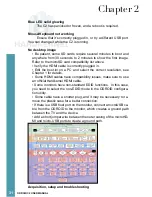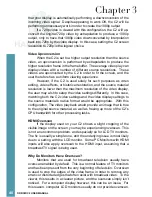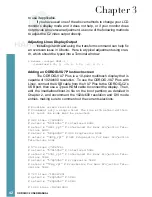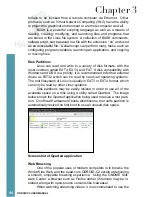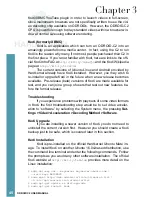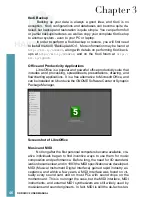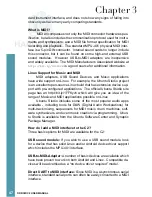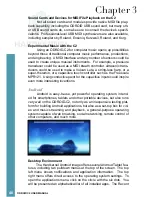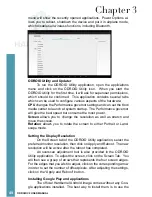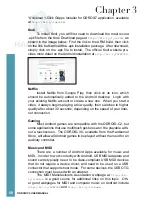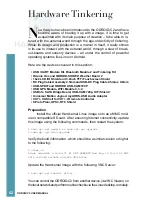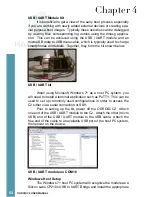
39
ODROID C2 USER MANUAL
as well as some sources that use these resolutions.
Standard Resolution Aspect Ratio Refresh Rate Typical Sources
2160p (4K) 3840 × 2160 16:9 (1.78:1) 50Hz, 60Hz HDTV, Blu-ray DVD
1080p
1920 x 1080 16:9 (1.78:1) 50Hz, 60Hz HDTV, Blu-ray DVD
1080i
1920 x 1080 16:9 (1.78:1) 50Hz, 60Hz HDTV, Blu-ray DVD
720p
1280 x 720
16:9 (1.78:1) 50Hz, 60Hz HDTV, miniDV
As a comparison, the standard DVD Video format uses a display
resolution of 720 x 480 with a 4:3 aspect ratio (non-widescreen). This
resolution is also referred to as D-1 video and is the standard used or
miniDV digital camcorders.
Progressive vs Interlaced Video
2160p (4K), 1080p and 720p are progressive video formats. For
these formats, a complete video image is transferred for each frame
of the video signal, so that a 60fps video displays 60 complete, full
frames per second. This format is visually superior to interlaced video,
and in general should be used when supported by your display.
1080i and 720i are interlaced video formats, and video interlac-
ing is the historical standard for broadcast video. In interlacing, two
frames (or more correctly, fields) are transferred for each frame of the
video signal, so that a 60fps video has 30 complete, full frames per
second. The display device sends the two fields to the screen in the
horizontal odd and even (or interlaced) pixel positions. Given the vi-
sual persistence of the human eye, this reconstruction of full frames is
undetectable to the viewer.
In general, faster frame rates result in a visually smoother vid-
eo playback, and interlacing results in a halving of the native frame/
field transfer rate because two fields are required for the full image.
Frame rate and visual experience are subjective, however. Tradition-
ally, movies produced with conventional film use a 24 frames per sec-
ond rate, and many viewers prefer the cinematic experience that 24fps
video provides. In fact, much of the professional video produced with
high-end gear is actually shot at 60fps or higher, and later converted
to video frame rates to provide the look and feel of cinematic film.
Video Downconversion
When selecting a screen resolution for your C2, you should first
consult the specifications for the display that you plan to use. In gen-
eral, using the native resolution of your display will provide the best
performance and quality.
For example, if you use a display that only supports native 720p,
and you set your C2 to a 1080p screen resolution, it will probably work,
but is not the ideal configuration. The mismatch in resolutions indicates
Chapter 3
Содержание ODROID-C2
Страница 1: ...ODROID C2 USER MANUAL rev 20161115 ...







